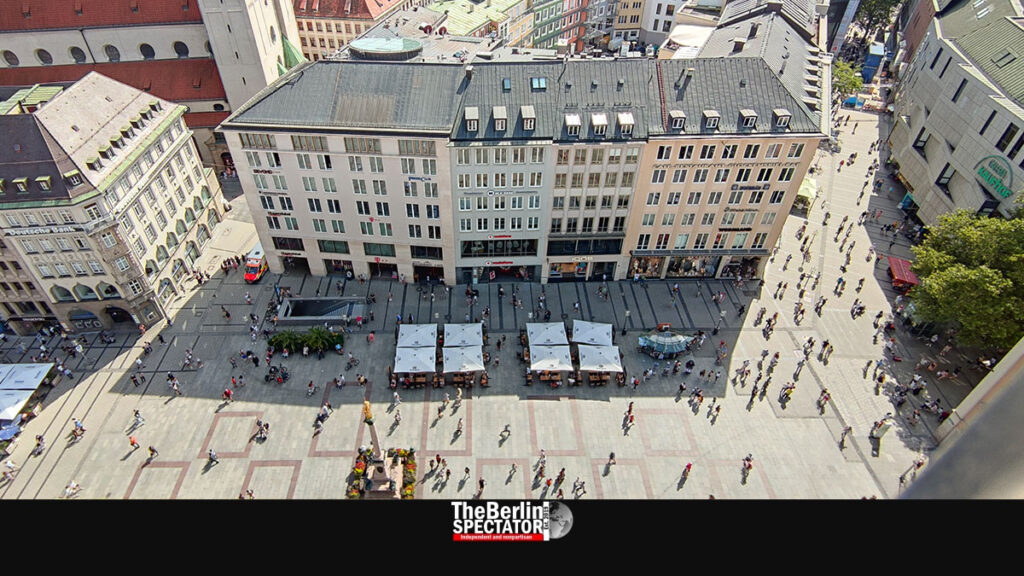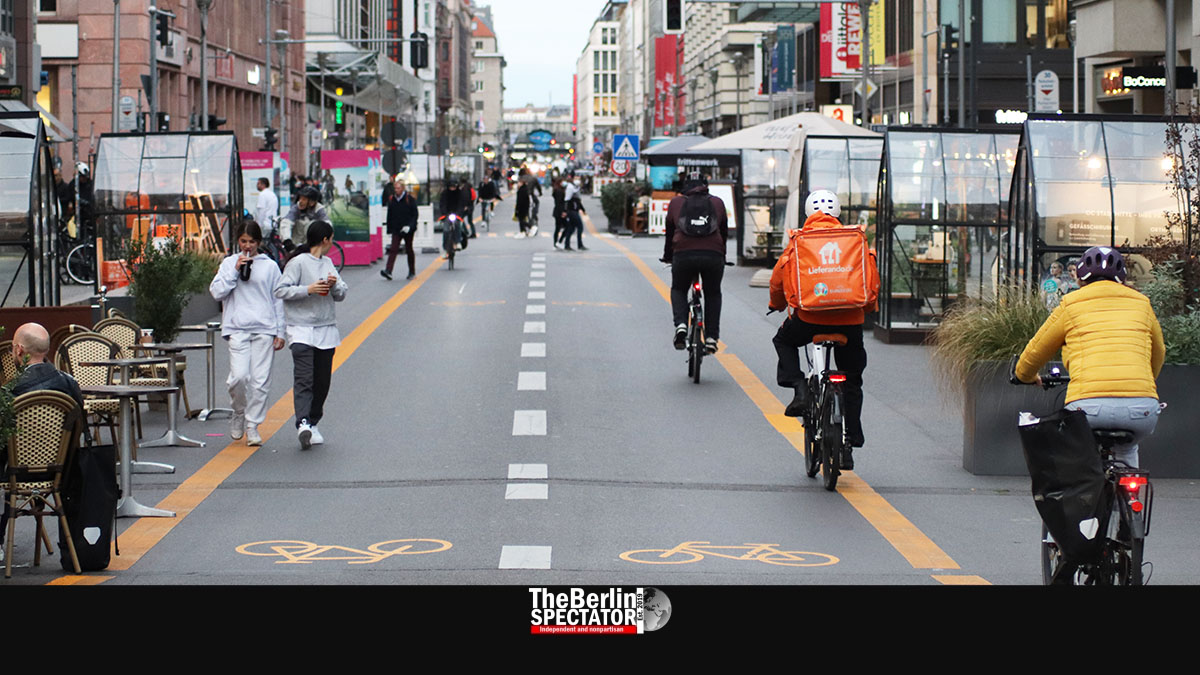Pedestrian zones are a science cities should master before they actually start building them. Germany provides good examples for modern day pedestrian zones which attract people, and bad ones which scare them away.
Berlin, October 19th, 2021 (The Berlin Spectator) — Bremen is a nice city. Those narrow alleys in the Schnoor area are unique. Having a meal and drink at the Schlachte, a promenade at the Weser river, is priceless. In order to go shopping, residents of Bremen hit Obernstrasse, which is where all of those department stores and other major shops are located. In 1963, a genius idea was developed at Bremen’s historic city hall. Obernstrasse was supposed to become a pedestrian zone. Trams were going to be the only means of transport allowed there. This is how it happened.
Beauty and Attraction
By today, almost 60 years later, Obernstrasse attracts more than 8,000 passers-by per hour, on busy days. In the early 2000s, the pedestrian zone was renovated. Right next to refurbished tram tracks they installed a rain drainage system, which seemed like a great idea in Bremen because, up there, it rains almost all the time. The municipality had a metal covering installed. It did not take long until a problem arose. As it turned out, the metal was very slippery in the rain, and even more so in the snow. Especially in winter, pedestrians kept on slipping and falling on their behinds.

Another genius idea was needed to resolve the issue. Bremen relied on a modern invention known as the ‘sign’. So, signs were set up in winter, warning people to watch their step. They still fell, but in lower numbers. So, what is all of this supposed to show? Pedestrian zones should be thought through. Every detail is important, including the question which traffic participants they are for and how they interact. Beauty, surfaces, attracting people and businesses, as well as the ramifications for the neighboring streets are aspects which should be considered.
Flower Tubs
Berlin does not have that many pedestrian zones, considering the size of this city of 3.8 million inhabitants. In the outskirts, Tegel, Spandau and Köpenick have pedestrian zones. In Berlin’s two city centers, there are some little ones hardly anyone uses. Sure, Rathausstrasse does qualify as a pedestrian zone. So does part of Wilmersdorfer Strasse.

A year ago, the Senate Administration wanted to turn one of Berlin’s most famous streets into a pedestrian zone. Part of Friedrichstrasse, which used to be East Berlin’s presentable shopping street, was converted (see main photo at top of page). At first, this was supposed to be an experiment. The city and the Mitte district banned motorized traffic, installed some wooden seating accommodations, set up some flower tubs and painted a wide bike lane on the pavement. The result looked terrible. It still does.
‘Bicycle Freeway’
Not all affected businesses owners were happy when it happened, some still do not agree. Others do. According to Berlin’s Senate Administration, four out of five polled residents said they wanted the Friedrichstrasse experiment to become a lasting state. On the one hand, they do have a point, because Friedrichstrasse has become more quiet between its intersections with Leipziger Strasse and Französische Strasse, which is where the pedestrian zone was installed.

But the critics are right too. For the CDU at the Berlin House of Representatives, Oliver Friederici stated there still was not enough room for pedestrians because the project had actually become a “bicycle freeway”. Absolutely. In the morning, all of those employees from Kreuzberg and Neukölln race northward, to their offices in the Mitte district. When the sun goes down, they race back home. Do they give a damn about the pedestrians who might want to cross Friedrichstrasse? No.
Dangerous Situations
Improvements are necessary. Ideas are already being discussed, including banning cyclists from Friedrichstrasse and giving them a “bicycle street” in Charlottenstrasse, a parallel artery. Prettying up the whole thing somehow, with a new surface, could help as well. For now, Friedrichstrasse looks about as grey as it did before the conversion. In the state it is in, it is not attracting too many pedestrians, except for those who work there and people who want to visit specific stores. On the other hand, it is hard to tell how attractive the street is to visitors, because Corona partially messed up the entire experiment. Since it began, tourists mostly stayed away. Would they have populated Friedrichstrasse had they come to Berlin? Nobody has the faintest clue.

In this city, there are spots which should be converted to pedestrian zones yesterday, for safety reasons. One of those is located in the very same street, Friedrichstrasse. Around Checkpoint Charlie, tourists keep on crossing because they want to take a close look at the recreated wooden hut which used to accommodate American soldiers on duty there, during the Cold War, and take selfies. At the same time, cars, sightseeing buses and delivery vans race by all the time. This frequently leads to dangerous situations.
Interesting and Unique
Further south, in the most posh area of Kreuzberg, another pedestrian zone is supposed to be built. Bergmannstrasse is known for its numerous cafés and restaurants. The conversion will take a while. So far, this one was turned into a one-way street with a luxury bike lane. Here, the district imposed a speed limit of 10 km/h (6.2 mph) on cyclists, because they looked at the “bicycle freeway” in Friedrichstrasse and came to the conclusion that it was necessary.
But Germany, and Berlin in particular, still has a lot to learn about pedestrian zones. This includes the art of making them interesting and unique. Most German pedestrian zones, from Flensburg to Freiburg, feature the very same shops, no matter where people go. It is hard to tell the difference. Among Germany’s largest cities, Munich is definitely the place with the most attractive pedestrian zones.
The Berlin Spectator needs your support.
There are several ways:
> You can support us via Paypal.
> You can become our patron at Patreon.
So far, we have six patrons. We are very thankful, but we need many more supporters.
Thank you! We appreciate your support more than you think.


